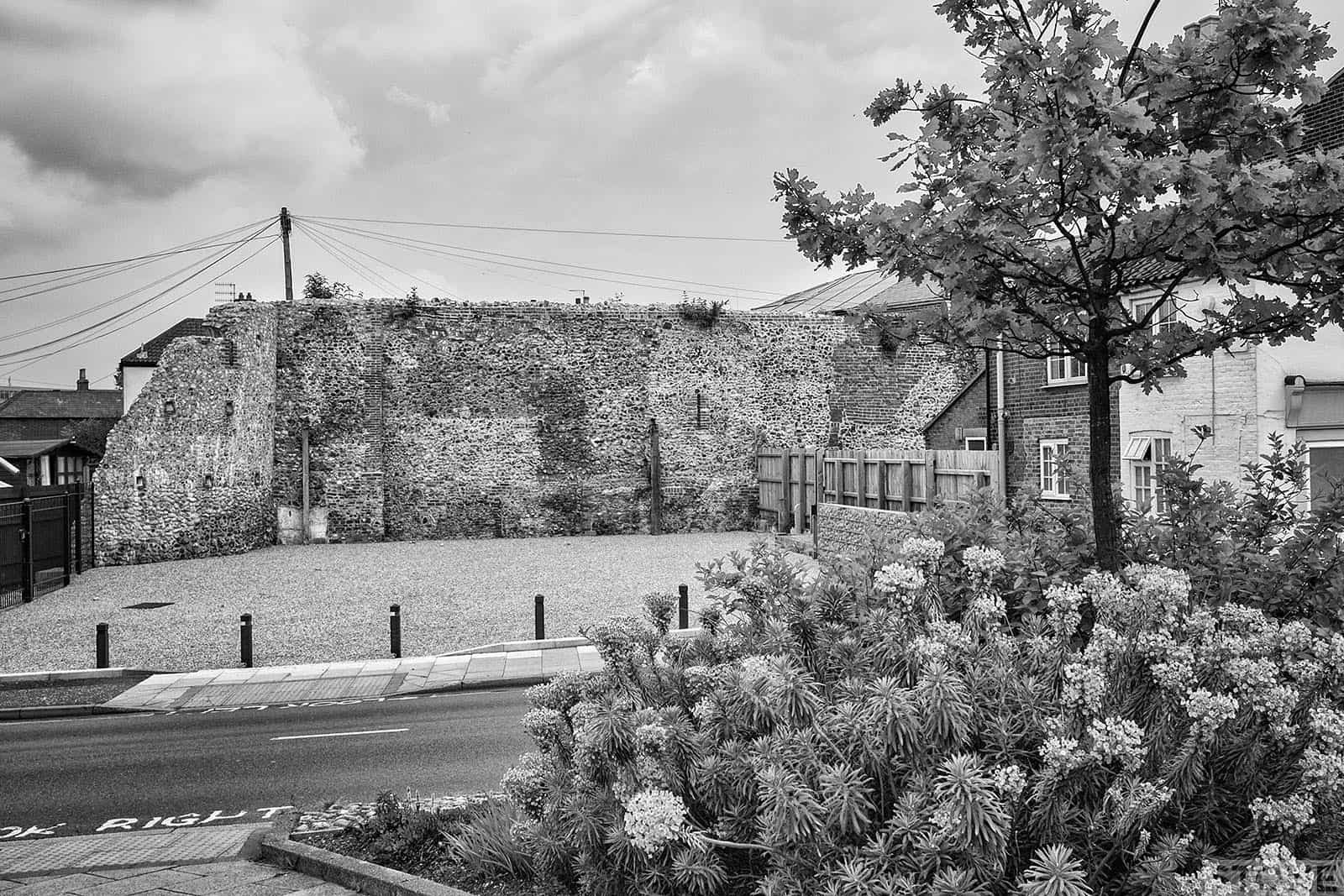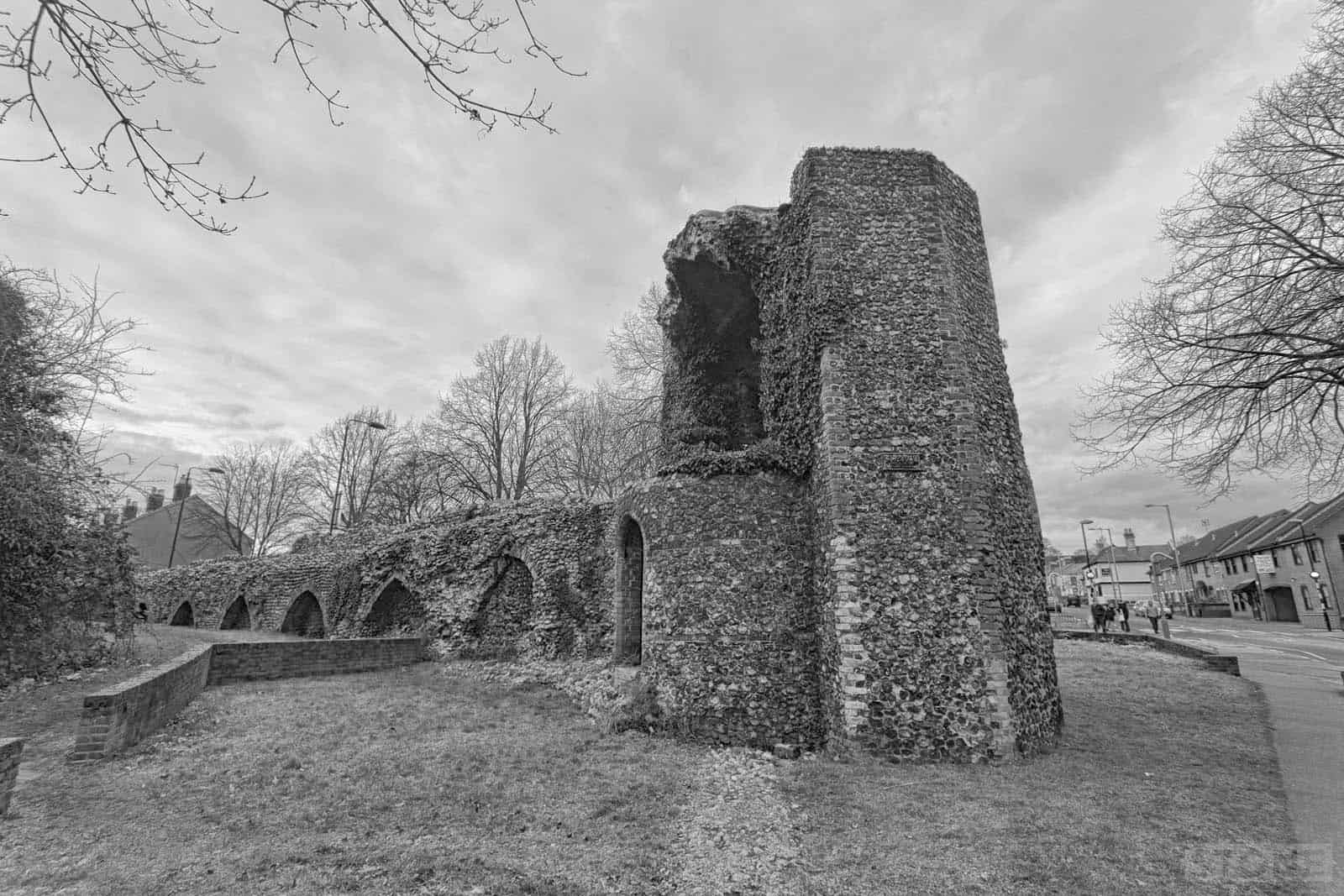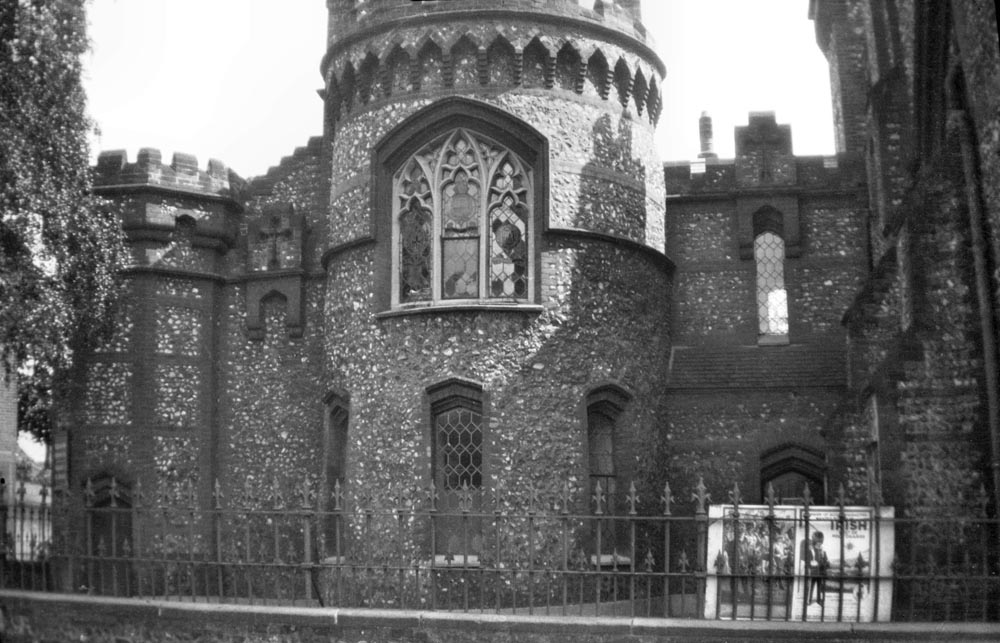Norwich: The walled city.
I’ve been wandering around staring at flint in various forms for years. This is Norfolk after all, it’s ubiquitous, and unavoidable – from pebble built fisherman’s cottages to our thousands of churches, dividing walls, farms, sheds and tumbledown shacks even flint mines and tools. Nothing makes me more excited than a nice bit of medieval wall, not flush work and all that posh show-offy stuff, just a bit of wall faced in flint with a flint core. And since childhood I’ve always had a bit of a thing for Norwich city wall; I’ve lived on the line of it several times, picking up bits of it from the garden, found remnants under a floor, and worked in a pub that had a dividing wall that was part of it in the cellar. Magpie print, which used to stand where nothing now does except wall and some hoardings, was one of many print shops where I used to occasionally offer bit of artwork cover when needed, it leant against it and also had a curious kitchen full of tower. Somehow on Saturday yet again I ended up staring at some near the Yarn Mill in ‘the new business quarter for Norwich’ as the Burghers of Norwich like to call it, or a ‘giant car park where some nice council flats used to be’ as I like to think of it. I do my usual willing an inanimate to somehow project images of its past onto the history mad-eyed CRT monitor in my head, It didn’t work, so I’ll end up reading about it instead again. All I did get was sweaty, viciously attacked by brambles, chased by a wasp and stared at by a bored car park attendant. The thing with our city walls is that I think a lot of people tend to forget they’re there, sitting as they do, just there, they’re kind of lost in plain site, part of the fabric and texture of our everyday life.
What my brief cavorting with wasps and parking attendants did do was make me remember some old words I wrote about the walls and made me dig it out and start putting it here.
The City Walls were basically built over a previous defensive bank and ditch which was constructed in the mid thirteenth century; the walls were largely put on top of that bank,although not entirely, there was certainly a difference in previous extents of the city and some sections of an older ditch and berm which probably had a wooden pallisade have been found presenting something smaller as a city, this particularly true on the Botolph Street area where the original ran through what is now a car park and Anglia Square, because some of it revealed itself in an archaeological dig in the 1970s, and St Botolph’s church where Botolph Street got its name is an indication of a previous gate.
The wall we see remnants of was mostly financed by private money and the church; primarily from merchants to protect the city and their interests from the French, who were a very likely threat. Those financiers included Richard Spink who it appears had a fortune to spend on it, including armaments and finishing gates off that hadn’t been. By 1320 the job was more or less complete. The walls were there, in places it reached as tall as seven metres or 22 feet to the crenelated parapet wall; a walkway ran, we believe, the entire length of the inside. The walls were nearly two metres or 7 feet thick at their thickest point, and there were twelve gates, arguably three water or chain gates or boom points at Carrow, St Martins and Pockthorpe, and a fortified bridge at Bishop’s Gate where the wall didn’t run as the river provided protection enough. Plus of course Cow Tower sat on the bend of the river acting as a further defence.
Inside the wall was an alley that ran the entire length and outside a broad and deep ditch that would have made the whole thing look even more impressive. Towers, some of which still survive where dotted along the length. The whole thing was bristling with arrow slits and loupes and would have been locked at night. It also had a handy extra reason-to-be; it enabled better collection of levies by anyone heading into the city. It contained about a square mile of land, at the time that made it larger than London’s walled city in extent and to this day is possibly one of the best examples of a walled city where the walls haven’t been replaced and repaired to a point where they are are a facsimile, ours are generally although not entirely the real thing, albeit thinner than they would have been because teh nature of things that are left and not looked after is twofold, the fabric fails and stone falls off, and people nick stuff to build other things with, or drop on people they don’t like.
The wall is woven into the city’s story from then on, it’s seen love in the arches, fights, murders, death and taxes, people have been hung, riots and revolts have been held by it and broken through, it fell into disuse, was damaged, built against and cleared, the gates demolished. As recently as the 1960s we were still messing about knocking bits down. As we move along each chunk that remains, I’ll try and outline some of the pieces of life that are meshed into it, the smaller stories that make up the whole.
City Walls Eastern boom tower COLOUR [0758] 1935-09-14: Courtesy Jonathan Plunkett. George Plunkett collection.
The Walled City 4: St Augustines Gate
This used to be the back wall of Magpie Print. I remember it being an inside; the inside of a building full of printing gear with 'Mudpie Bob' as we called him at the helm steering it. The trade seas were rough, from letterpress through to photolitho. I used to help...
The Walled City 3: Pockthorpe gate and Norwich city wall
Barrack Street is pretty dull inmost respects these days, a humdrum piece of grey carriageway winding through crossings and traffic islands as it links the Magdalen Street flyover to the nexus; Mousehold, Plumstead, Kett's Heights or along Riverside. It is the epitome...
Maps: Norwich City Wall
Basically Norwich City Wall with all the main elements marked on, This is not 100% accurate for detail, It's stepping off point and that is all at that stage. Building started on 1294, finished in 1350-ish, then we started to pull it down. Privately financed partly by...
The walled city 2: Berstrete gate
Ber Street Gate or Berstrete Gate, sits just on the edge of Foulgers opening off Ber Street and Bracondale. Another Norwich city wall fragment, not the gate itself. The gate no longer exists, largely a result mainly of progress – progress sometimes has to embrace such...
Walled city 1: Black Tower and Bracondale
I'll start at Black Tower or Boteliers or Butlers tower in Bracondale and continue in no particular order. This was also known as Snuff Tower because it contained a snuff mill, and later a cotton mill which were still in evidence at the beginning of nineteenth century...





